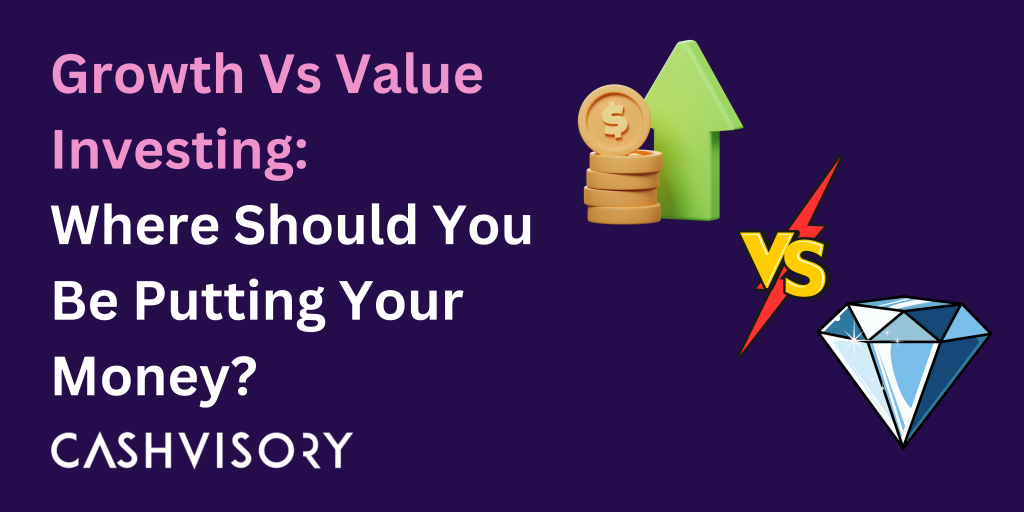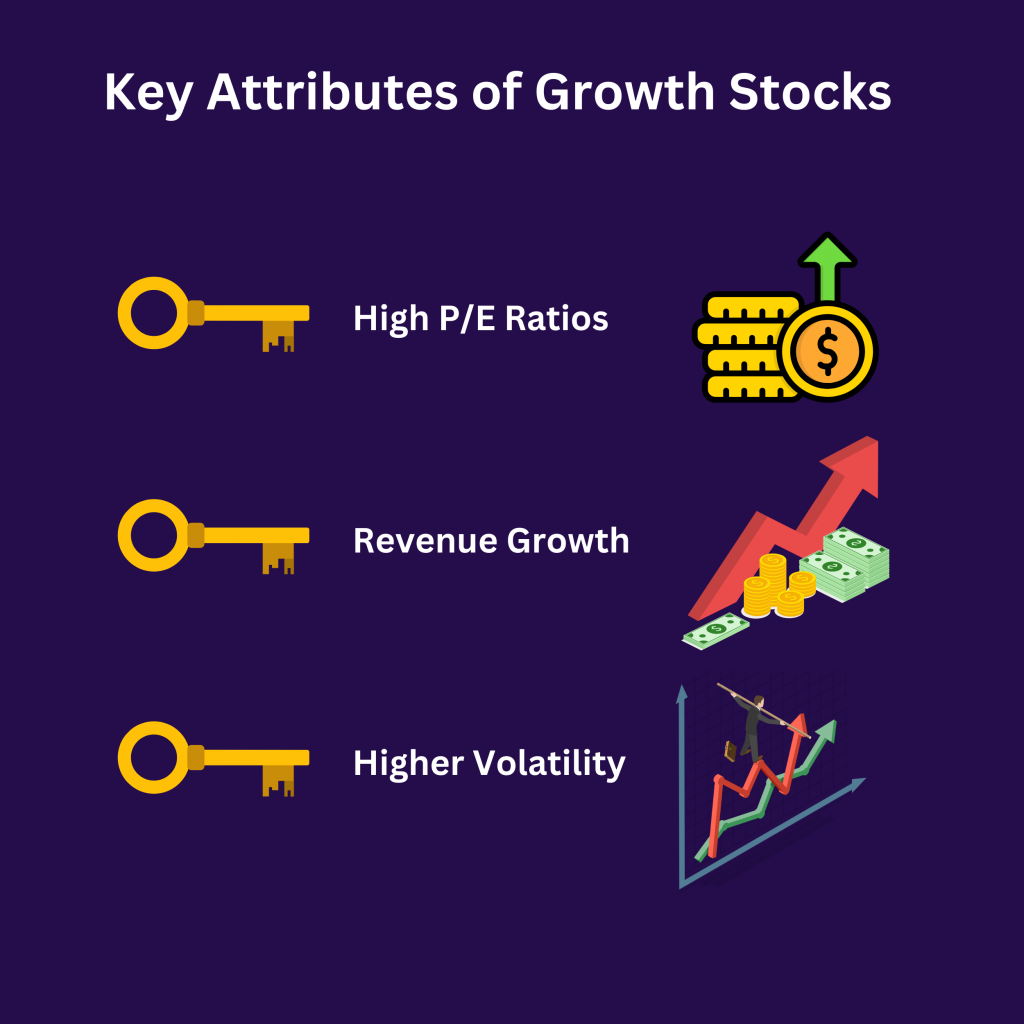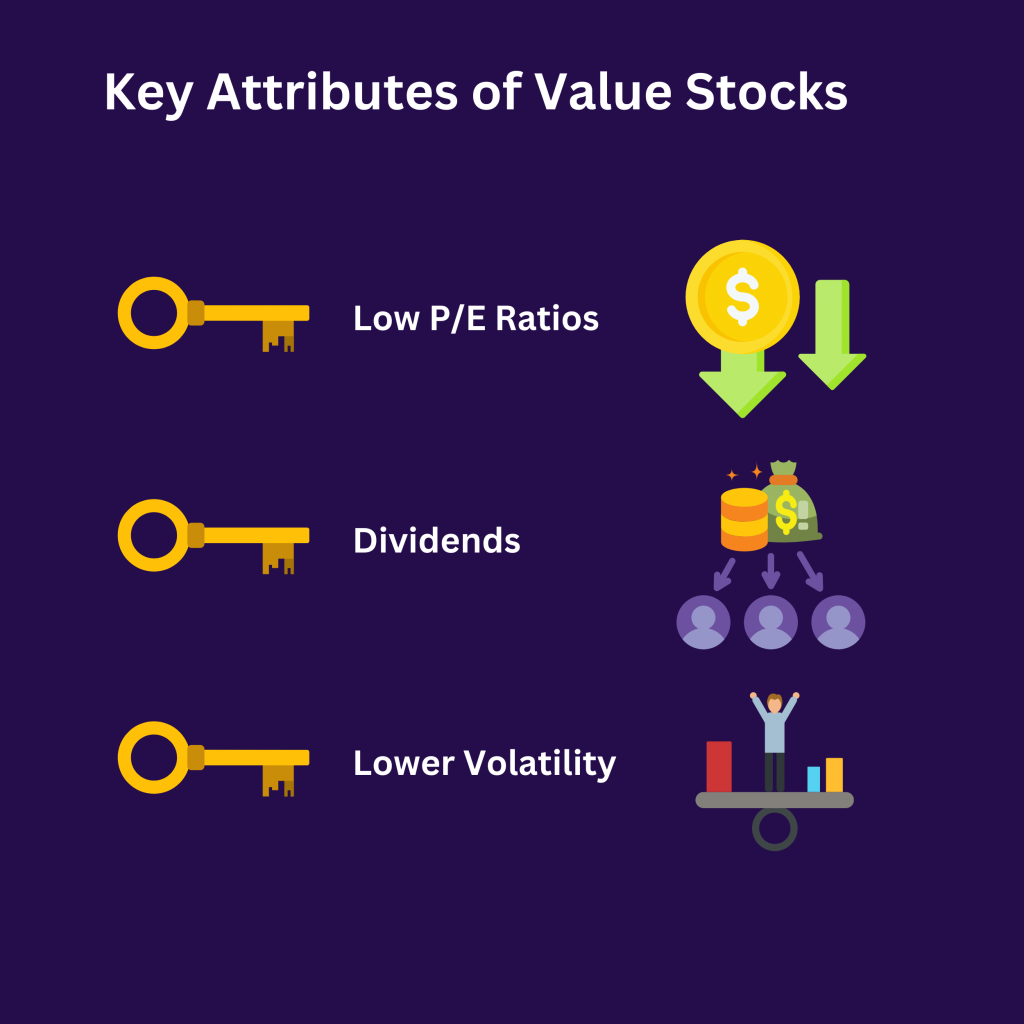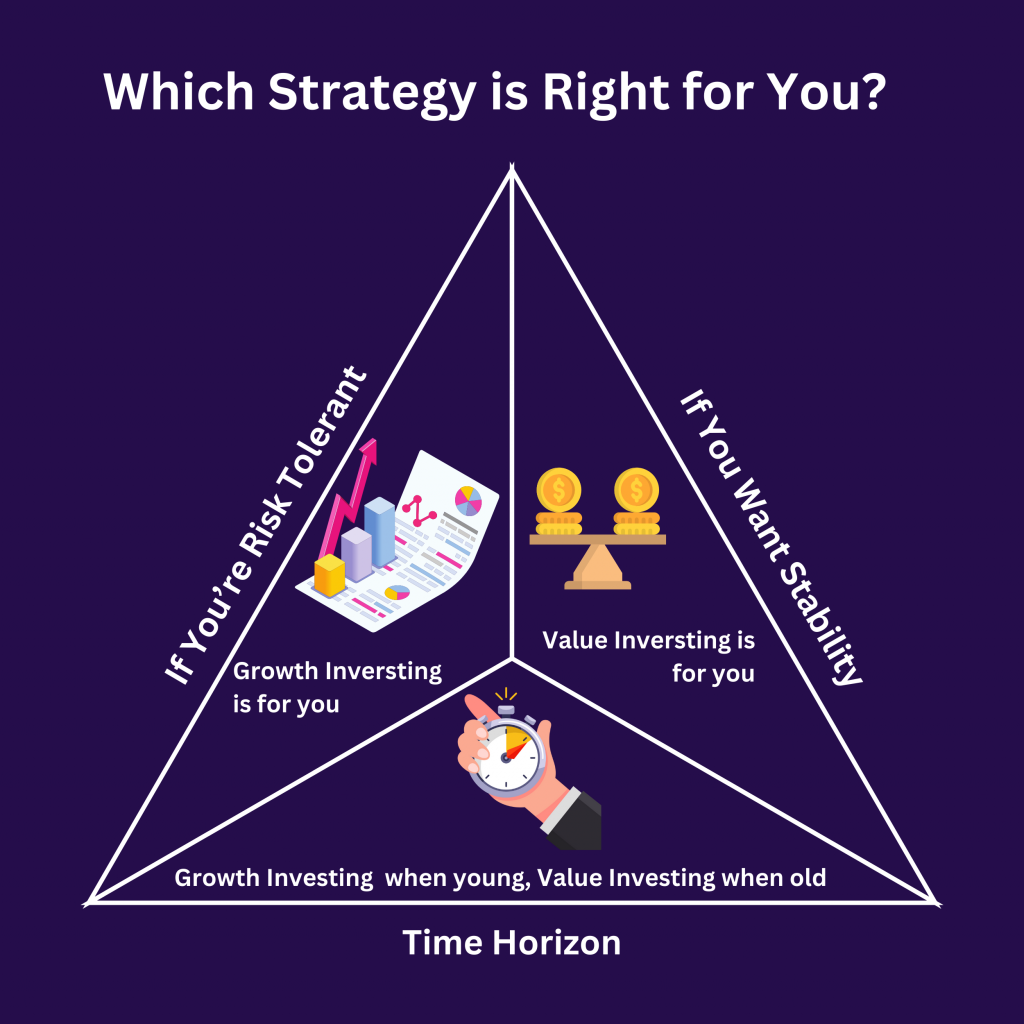
Investing can be a complex world, but understanding different approaches like growth and value investing can make it easier to choose a strategy that aligns with your financial goals. In this blog, we’ll break down these two investing methods, provide real-world examples, and help you decide which strategy might work best for you.
Takeaways
- Growth investing is for those seeking higher returns with higher risk.
- Value investing offers more stability with less potential for explosive growth.
- Consider your financial goals, risk tolerance, and time horizon when choosing a strategy.
What is Growth Investing?
Growth investing focuses on buying stocks of companies expected to grow at an above-average rate compared to other businesses. These companies often reinvest their earnings into business expansion, research, or other growth-focused activities, instead of paying dividends. While growth stocks have higher potential returns, they also come with higher risk due to their volatility.
Example:
Think of companies like Amazon or Tesla, which reinvest their profits to fuel innovation and expansion. Investors in these companies expect long-term rewards in the form of substantial stock price appreciation.
Key Attributes of Growth Stocks

High P/E Ratios: Growth companies often have high Price-to-Earnings (P/E) ratios, meaning investors are paying more for each dollar of earnings. This reflects their confidence in the company’s future growth.
- Revenue Growth: These companies usually demonstrate strong revenue growth but might not show significant profits in the short term.
- Higher Volatility: Growth stocks can be volatile, with sharp price fluctuations depending on market sentiment.
What is Value Investing?
On the other hand, value investing involves picking stocks that appear undervalued by the market. Value investors seek out companies whose stocks are trading below their intrinsic value— which is essentially what the company is truly worth, based on factors like its assets, earnings, and future growth potential.
Think of it like buying something on sale; you’re paying less than what you believe it’s actually worth, often due to temporary issues or market overreaction. These stocks typically offer a margin of safety, which helps protect against significant losses.
Example:
For example, think of Tata Motors or ITC. Tata Motors has faced market volatility due to temporary issues like global demand fluctuations, but many see its long-term value due to its brand strength and global presence.
ITC has also been considered undervalued at times, despite its diversified business and strong cash flows. Value investors would buy these stocks, expecting that their prices will rise as the market realizes their true worth.
Key Attributes of Value Stocks:

- Low P/E Ratios: Value stocks tend to have low Price-to-Earnings ratios, indicating that they are cheap relative to their earnings.
- Dividends: Value stocks often provide regular dividends, offering an income stream to investors.
- Lower Volatility: These stocks tend to be less volatile, making them more appealing to risk-averse investors.
Growth vs. Value: Key Differences
| Attribute | Growth Investing | Value Investing |
|---|---|---|
| Primary Focus | High growth potential, often at higher risk. | Undervalued stocks with long-term stability. |
| Risk | Higher, with potential for bigger gains and losses. | Lower, as stocks offer a margin of safety. |
| Return Expectation | Higher returns in the long term. | Steady returns with income from dividends. |
| Stock Examples | Amazon, Tesla, Netflix | Coca-Cola, Johnson & Johnson, Procter & Gamble |
| Investment Horizon | Typically long-term | Medium to long-term |
| Volatility | High | Moderate to Low. |
Which Strategy is Right for You?

When deciding between growth and value investing, consider your financial situation, goals, and risk tolerance.
- If You’re Risk Tolerant: Growth investing might appeal to you if you’re willing to endure short-term volatility for the potential of substantial long-term gains.
- If You Want Stability: Value investing might suit you better if you prefer stable companies with steady returns, even if growth is slower.
- Time Horizon: Growth investing often works better for younger investors or those with a longer time horizon, as it can take years for a growth stock’s full potential to be realized. Value investing can be suitable for all age groups but is especially popular among older investors looking for stability.
Growth and Value Stocks in Real Life
To bring these concepts to life:
Growth Stock Example: Tesla (TSLA), a market leader in electric vehicles, has shown rapid revenue growth but trades at a very high valuation.
Value Stock Example: Berkshire Hathaway (BRK.A), led by Warren Buffett, trades below its intrinsic value according to value investors, even though it’s a massive, well-established company.
Pros and Cons of Growth and Value Investing
| Attribute | Growth Investing | Value Investing |
|---|---|---|
| Pros: | High potential for capital gains. | Less risk due to margin of safety. |
| Invest in future market leaders. | Regular income from dividends. | |
| Cons: | High volatility and risk. | Slower growth potential. |
| Often no dividends. | May take longer for stocks to appreciate. | |
| Stocks can be overvalued. |
Famous Growth vs. Value Investors
Many of America’s most famous investors have been value investors, including Warren Buffett, Charlie Munger, and Ben Graham. They have built their wealth by finding undervalued companies and holding onto them for the long term.
Still, plenty of wealthy individuals own growth stocks—Jeff Bezos, Amazon’s founder, and hedge fund billionaire Bill Ackman have made significant fortunes with growth investing. Interestingly, even Warren Buffett has shifted his approach in recent years, investing in companies with strong growth potential like Apple.
Final Thoughts: Choosing the Right Path
Ultimately, the best investment strategy depends on your individual financial situation and goals. If you have a high risk tolerance and are looking for significant long-term gains, growth investing could be a good fit. However, if you’re more focused on stability and regular income, value investing might be the better option.
If you’re unsure, it’s always a good idea to consult with a financial advisor. They can help tailor an investment strategy to suit your personal goals, risk tolerance, and investment horizon.
Cashvisory
At Cashvisory, we understand that choosing the right investment strategy can be challenging. Whether you’re drawn to the potential of growth investing or the stability of value investing, our team provides personalized guidance based on your financial goals, risk tolerance, and time horizon. We focus on helping you make informed decisions, ensuring that your portfolio aligns with your unique needs for long-term success.